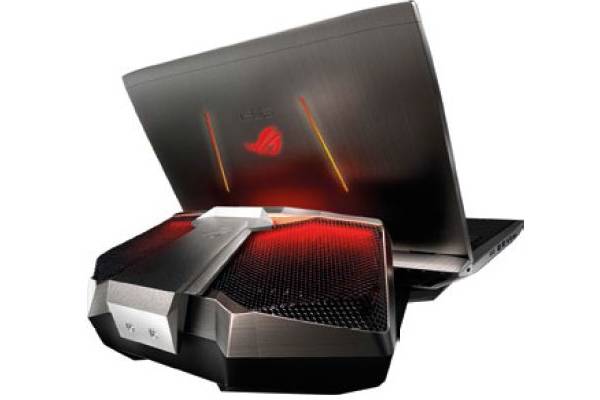120Hz was yesterday. Today’s TN gaming monitors have left that revolutionary benchmark in the past, blazing towards higher refresh rates in the name of competitive gaming and esports. If you’re willing to trade color and resolution for speed, here are some picks to consider.


120Hz was yesterday. Today’s TN gaming monitors have left that revolutionary benchmark in the past, blazing towards higher refresh rates in the name of competitive gaming and esports. If you’re willing to trade color and resolution for speed, here are some picks to consider.
ASUS ROG SWIFT PG258Q
•
BENQ ZOWIE XL2540
•
VIEWSONIC XG2530
•
ALIENWARE AW2518H
•
ACER PREDATOR XB252Q


Asus brought new meaning to their ROG Swift line with the PG258Q. Packing a 1ms response time, Nvidia G-Sync, and ULMB (Ultra Low Motion Blur), this 24.5-inch monitor helped pave the way for native 240Hz TN offerings.
At first blush, the PG258Q certainly invokes curiosity. Eyes are immediately drawn to the Light Signature projected onto the table and, by extension, the monitor’s tripod stand. The former casts the ROG logo by default, but imaginative owners may get their own plates customized. While said light can be turned off , the stand poses more of a problem. The large footprint eats plenty of tabletop space, making this monitor a tight fit on smaller desks.
Still, the stand is stable for whatever height and orientation the monitor can be placed in. Asus brings the full range of adjustments, including tilt, swivel, and a 90-degree pivot. For greater flexibility, the PG258Q is also equipped with a 100mm VESA mount.
Looking under the detachable cable panel reveals a modest range of input options. The all-important DisplayPort 1.2 is there to surpass the 60Hz mark, while the HDMI 1.4 may come in handy for gaming consoles and the like. Wrapping up the list is a pair of USB 3.0 for a keyboard and mouse, or something permanently attached – the cable routing isn’t designed for quick and easy access.
The strengths of the PG258Q shines once you sit down to use it. Games exhibited little to no blur or ghosting, making snap fire and quick turns in shooters enjoyable. Fast action scenes in movies and TV reap the benefits too, with little contrast or brightness issues, and impressive color (72% NTSC) for a TN panel. However, the narrow viewing angles makes this better suited for solo audiences, and initial calibration is highly recommended.
Thankfully, adjusting modes and settings are a breeze since Asus included both a joystick and physical buttons for the on-screen display. There’s a blue light filter to help reduce eyestrain for long sessions, as well as user-defined presets bound to the physical buttons. Gaming-centric features such as an FPS counter, timer, and crosshair overlay are also present should you find those handy.
Asus have made an impressive first step in the 240Hz realm with the PG258Q, boasting plenty of performance chops and color competency to round it off as a good entertainment monitor.



AT A GLANCE
SIZE
24.5”
RESOLUTION
1920×1080
REFRESH RATE
240Hz Native
RESPONSE TIME
1ms
ADAPTIVE SYNC
Nvidia G-Sync
COLOR GAMUT
72% NTSC
DISPLAY INTERFACE
DisplayPort 1.2, HDMI
1.4
OTHER PORTS
USB 3.0 (×2),
Headphone Out
VESA MOUNT
100mm
PRICE
$1,099

BenQ Zowie has embedded deep into esports on the strength of its peripherals, and their XL2540 monitor has the same audience in mind. It touts the same native 240Hz refresh rate and 1ms response time of its peers but packages thoughtful accessories for the competitive gamer.
For a 24.5-inch monitor, the XL2540 appears larger than it is thanks to the detachable shields framing either side. They’re designed to cut glare, reflections, and any flashes of light or movement that lie within peripheral vision — a bigger concern at events than at home. Nonetheless, it does help to pull focus towards the game or movie on-screen, bumping up the immersion factor.
Similarly, the XL2540 is mounted on a stand designed for events, with a solid top handle that doesn’t leave the monitor rattling. The stand allows smooth adjustments to height, tilt, and swivel, with printed markers in place to serve as guides or future references. The stand’s base also comes with a circular recess meant for the included S-Switch, an accessory to quickly switch monitor profiles or inputs.
For input, the XL2540 accepts the requisite DisplayPort 1.2 alongside HDMI 2.0 and DVI-DL. Other ports include four USB 3.0, three of which are downstream for peripherals; you’ll find two of them along the monitor’s left edge, together with the microphone and headphone ports, as well as a pop-out headset hanger. There’s even a slot for a Kensington lock.
When gaming, this monitor doesn’t disappoint. It delivers on the promised 240Hz, alongside what they call an Advanced Motion Accelerator (AMA) for a smooth and blur-free experience. It held up just as well as the Asus in shooters, racers, and fighters, though it did require more leg-work when it come to movies. While outof-the-box calibration did take longer on the XL2540, the final result didn’t raise any eyebrows.
That being said, BenQ Zowie offers users plenty of room to tweak and customize to their liking. There are physical buttons on the back of the monitor to set-up contrast and brightness basics, as well as features such as color vibrancy, black equalizer, or blue light filter. Three of the eight available presets are customizable too, and you’ll have quick access to all three via the S-Switch.
The XL2540 exudes confidence in an esports context but not much else, making this monitor an especially niche product in an already uncommon line-up.




ViewSonic’s entry may seem reserved compared to the flash of the other featured monitors, but underneath that simple exterior lies a configuration that’s well-suited for gaming and other entertainment tasks.
This 24.5-inch monitor adopts a simple, classic design that doesn’t cry for attention. There’s a brush of red here and there for visual interest, but the main appeal is in the brush-textured stand that’s flat and spacious enough to accommodate keyboards or a gamepad. Up for personal debate is the curved, bottom bezel, which not only makes it look thicker but downright odd when in portrait mode.
The stand itself seems to share the same mixed bag of design decisions. On the one hand, the stand is one of the best in terms of looks and size, occupying as little space as possible without sacrificing stability. On the other hand, it comes with sketchy inclusions such as a cable-organizer that may as well not be there. In terms of overall function, however, the height, swivel, tilt, and pivot adjustments are all smooth enough to operate one-handed, adding another huge plus to the XG2530’s books.
Connections-wise there is DisplayPort 1.2, HDMI 2.0, HDM 1.4, three USB 3.0 ports (one for upstream) and a 3.5mm jack for audio. A Kensington lock slot and a headphone hanger can also be found elsewhere on the monitor. That leaves the XG2530 on-par with the BenQ Zowie, yet where it edges slightly ahead is with the inclusion of two 3W speakers — nothing spectacular but undoubtedly handy should you ever need it.
It’s no slouch when it comes to performance, either. While supported games did hit 240Hz, there was just the slightest hint of delay compared to the others. It’s by no means a deal-breaker since looking for it required some intense staring at highcontrast scenes (unnoticeable in actual gameplay), but it was there nonetheless. Enabling FreeSync with an AMD graphics card will help to improve things.
Notably, the XG2530 didn’t take long to setup and calibrate at all. Colors and contrast were fairly impressive out of the box, and while the eventual contrast did seem a tad lacking, the overall presentation was acceptable enough for streamed videos and movies. There is some noticeable color shift but nothing out of the ordinary for a TN panel; it’s fine when viewed from dead center.
Although the ViewSonic XG2530 didn’t excel in any particular area, the sum of its parts is proving to be greater than its flaws.




Home of the iconic alien head, Alienware are no sticklers for design conventions or playing things safe. Although the AW2518H isn’t as out-of-this-world as some of their desktops, this 24.5-inch monitor will easily leave a lasting impression with anyone who’s tried it.
It’s no surprise that Alienware went with a gunmetal grey aesthetic, but the beautifully thin bezels pairs well with the lighting strips and imposing stand to carve a decidedly sci-fi look – more so when viewed in profile. RGB lighting and monitors may leave some recoiling, but it’s only three strips arranged as a triangle crosshair on the rear. They’re fairly subdued and can be turned off , whereas those who’ve embraced the bling will find plenty of ways to customize it to their liking.
The tripod stand is as heavy as it looks, so it’s not going to be moving once it’s been wrestled onto the desk. It’s incredibly sturdy, with the full complement of height, tilt, swivel, and pivot adjustments you’d expect from today’s gaming monitors. Interestingly, the buttons are just as sturdy, with no play when brushing your fingers against them. The power button is clearly separated from the rest, too, which is a welcome usability change from the tight grouping on the others.
The Alienware falls a little short with connections, offering only DisplayPort 1.2 and HDMI 1.4. It makes up for that by having a total of four USB 3.0 ports, two of which are placed under the bottom bezel. They both flank a headphone jack, and while all three are smack center and easily accessible, they can leave your desk looking messy with trailing cables. Granted, it does look sci-fi cool in some ways. To further nitpick, the angled power cable jack and small cable routing slot all makes setting up a chore.
Is the panel worth those small grievances? Easily. The colors on the AW2518H are pleasant and vivid right out the box on factory settings, with impressive black levels to boot. The on-screen menu adjustments are basic, lacking a color temperature slider, choosing to offer more presets instead. Just as impressive as the colors was the slick performance, smoothed across a wide range thanks to G-Sync. There’s a response time setting in the menu but, for best results, leave it at normal.
The Alienware AW2518H shaped up as a notable entry, hitting all the right notes for a competitive gaming monitor.



































